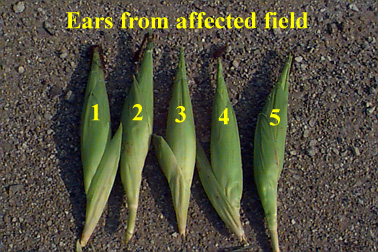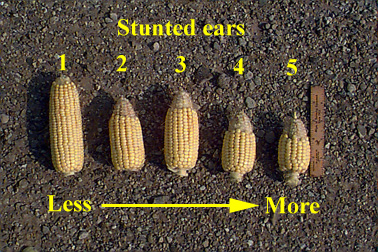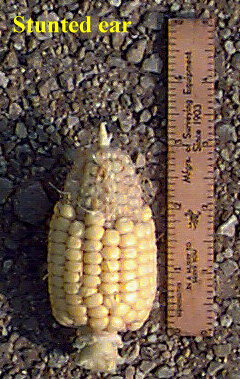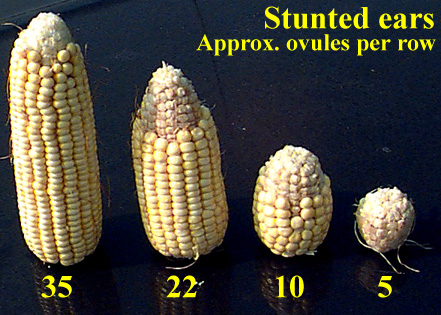
The 'Beer Can Ear Syndrome' in corn was described in an accompanying article. The stunted ears shown in this document were taken a field in northwest Indiana on August 30 that was planted in late May of 1996. The previous crop was soybean and the tillage was zero-till.
The field is located immediately west of a limestone crushing facility and north of a hardsurfaced road that was previously limestone rocked. The stunted ears were most prevalent in the southwest corner of the field which tends to lie lower than other areas of the field. Soil samples taken throughout the affected area indicated a soil pH of about 6.6, while samples from less affected areas of the field (closer to the limestone crusher and higher elevation) indicated soil pH values of 6.9 to 7.1.
Plants from which ears were found to be severely stunted appeared no less healthy than those whose ears were less stunted. Leaves, stalks, and husks were green with no visible damage or nutrient deficiencies. Husk leaves were essentially normal length and color for severely and less severely stunted ears (Fig. 1).




 Return to the the
Chat 'n Chew Cafe.
Return to the the
Chat 'n Chew Cafe.
 The Corn Growers Guidebook , a WWW resource
for corn management systems in Indiana and the eastern CornBelt.
The Corn Growers Guidebook , a WWW resource
for corn management systems in Indiana and the eastern CornBelt.
 Purdue University Agronomy Extension WWW
Home Page.
Purdue University Agronomy Extension WWW
Home Page.
 Purdue Agronomy On-Line! , Purdue's Agronomy
Department WWW Home Page.
Purdue Agronomy On-Line! , Purdue's Agronomy
Department WWW Home Page.